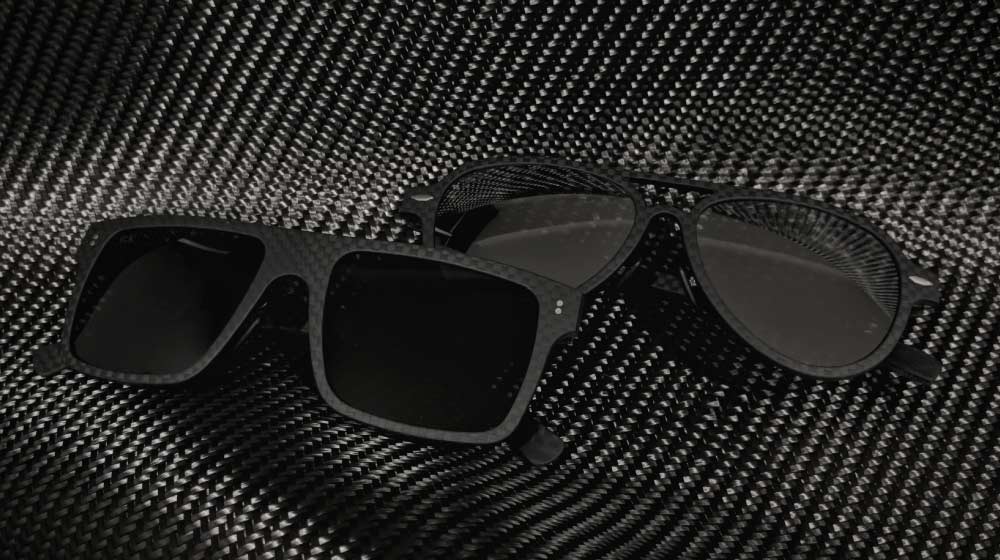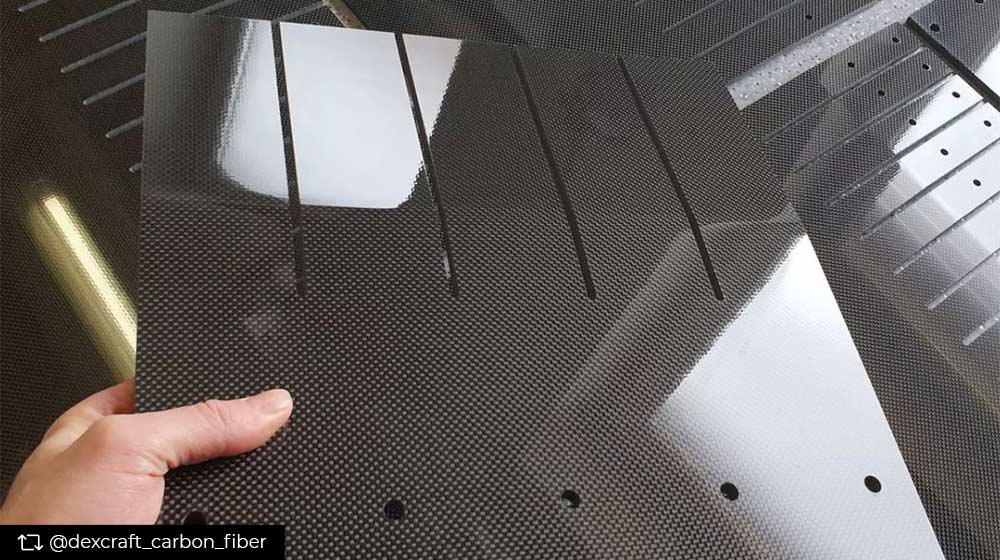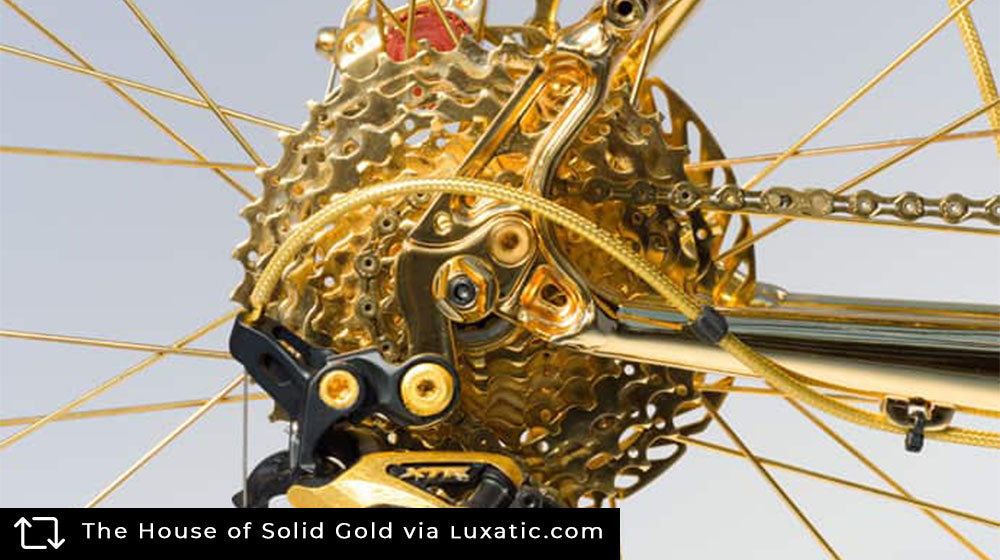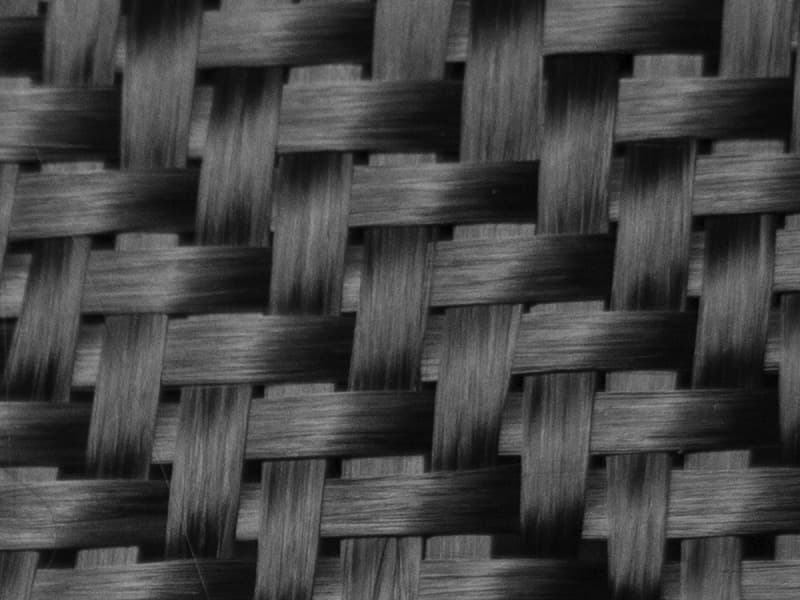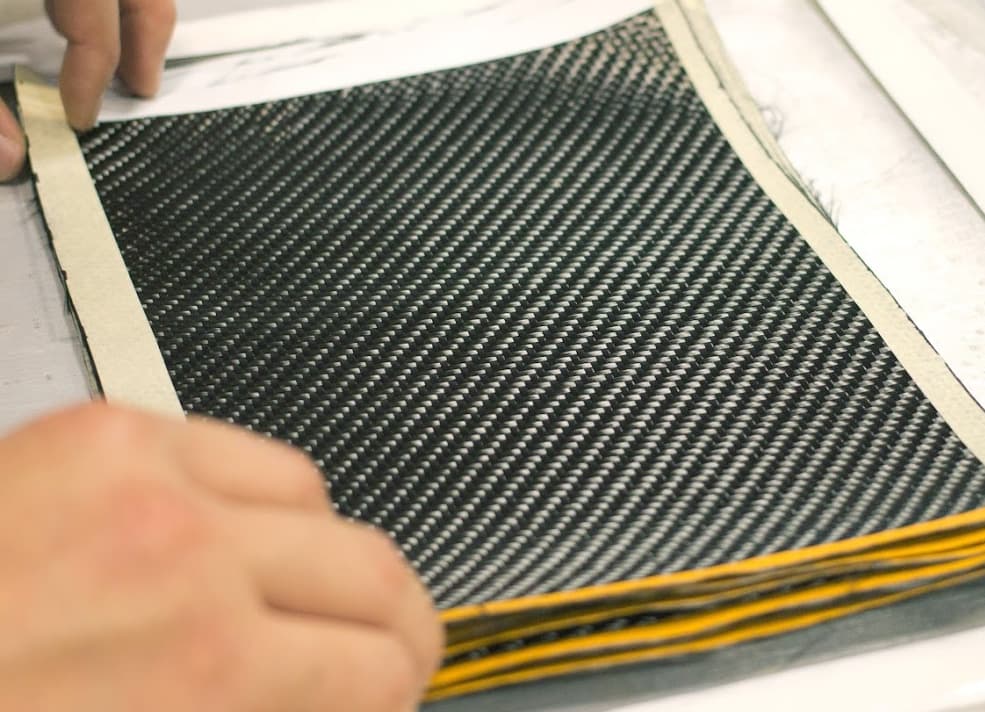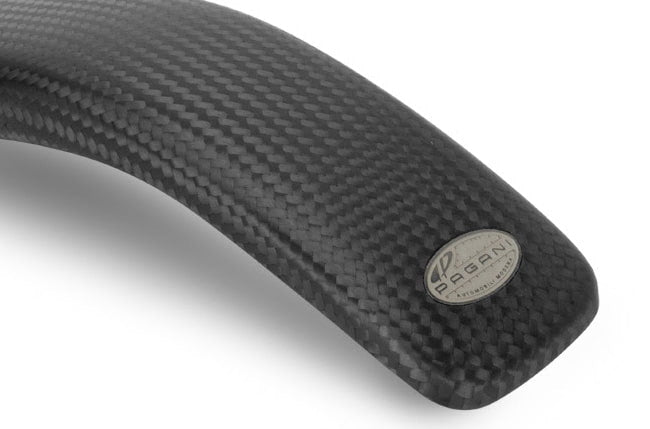Hey, you!
I know you came for our awesome blog post, but we have to let you in on something. Our main business is a shop that sells a ton of unique and cool lifestyle and personal accessories made with REAL carbon fiber.
If you love carbon fiber as much as we do, go explore!
Carbon fiber sunglasses are built from carbon fiber reinforced polymer—the same kind of composite you’ll find in race cars, bikes, and aerospace parts. Carbon strands are layered into resin, cured under heat, and shaped into frames that are lighter than plastic, stronger than metal, and stable in just about any environment.
Most frames use either woven or forged carbon. Woven gives you that familiar checkered texture. Forged is smoother, molded, and better for curved designs. Both are tough, corrosion-resistant, and hold their shape over time. They don’t flex much, and they’re not easy to adjust—but they’re made to stay dialed in.
If you’re shopping, skip anything labeled “carbon look.” Real carbon fiber frames weigh under 25 grams, show texture and depth, and come from brands that name the material up front.
In this guide, we’ll break down how carbon fiber sunglasses are made, how they perform, and what to know before buying a pair built to go the distance.
What Are Carbon Fiber Sunglasses?
Carbon fiber eyeglass frames are built from a high-performance material called carbon fiber reinforced polymer (CFRP). It’s a composite made by combining carbon fiber strands with a resin that hardens into a strong, lightweight structure.
At the microscopic level, each carbon fiber strand is packed with carbon atoms aligned in long, straight chains. These strands get woven or chopped into pieces, then layered into a mold and set with heat and pressure. That’s what gives the frames their shape and why they’re so strong for how little they weigh.
More than giving you a barely-there lightweight feel, carbon fiber frames solve three of the biggest problems that most frames run into over time: bending in the heat, weakening from everyday flexing, and breaking down when exposed to sweat or weather.
Why it works so well for sunglasses
-
Handles heat without warping: Carbon fiber doesn’t change shape in hot cars or direct sunlight. Plastic frames often swell or bend, but carbon stays stable even in extreme temps.
-
Holds its shape: These frames don’t flex much, and that’s the point. Carbon fiber is built to stay rigid, which makes it ideal for wraparound styles and frames that need to fit precisely.
-
Won’t corrode or break down: Sweat, saltwater, humidity, none of it damages carbon fiber. That’s why it’s used in everything from racing bikes to aerospace parts.
Each carbon fiber frame has to be cured, machined, and finished to exact specs. That’s how you get a frame that’s consistent down to the millimeter. Something you need for proper lens alignment, especially with prescription sunglasses.
Pros and Cons of Carbon Fiber Eyeglass Frames
Carbon fiber eyeglass frames are built for structure, not flexibility. They’re known for being ultralight, rigid, and corrosion-resistant, but they don’t behave like plastic or metal when it comes to impact or fit adjustment. Here’s how the material performs under real-world use.
Pros
-
Ultra-lightweight: Most carbon fiber frames weigh between 18 and 24 grams. You’ll feel the difference within the first hour of wearing them.
-
Hypoallergenic and skin-safe: No nickel, no irritation, and no weird chemical coatings.
-
Rigid and supportive: Keeps lenses aligned, even under stress.
-
Durable in harsh conditions: Salt, sweat, and UV exposure won’t break them down.
-
Visually distinct: Whether woven or forged, carbon has a sleek, modern aesthetic.
Cons
-
Can crack under sharp impact: Carbon doesn’t bend like metal. Drop it on concrete the wrong way, and it may fracture.
-
Not easily adjustable: You can’t heat and bend the arms like acetate.
-
Higher price point: Manufacturing is complex, and real carbon comes at a premium.
-
Limited flex: These are rigid frames. If you need full-frame flexibility, look to TR90 or memory metal instead.
If you want frames that flex and bend in your pocket, carbon fiber isn’t for you. But if you want something that stays dialed in and holds its shape for years, it’s one of the best materials available.
Woven vs. Forged Carbon: What You’re Actually Wearing on Your Face
Carbon fiber sunglasses come in two main forms: woven carbon fiber and forged carbon fiber. Both are made from real carbon, but the structure and the way they’re built lead to different benefits.
Woven Carbon Fiber
This is the traditional checkerboard pattern you’ve probably seen in high-performance gear. It’s made by laying strands of carbon in a tight weave, then sealing them in resin. It’s stiff, directional, and strong, and great for parts that don’t need complex curves.
Forged Carbon Fiber
Forged carbon uses chopped carbon strands that are compressed into molds. The fibers are randomly arranged, so the strength is spread evenly in all directions. It’s smoother, more organic looking, and opens the door to more creative frame shapes.
Key differences
-
Woven carbon has a classic tech look with directional stiffness.
-
Forged carbon is smoother, with a marbled texture and more design flexibility.
-
Both offer the same basic strengths: lightweight, corrosion-resistant, and long-lasting.
Are Carbon Fiber Frames Good for Prescription Lenses?
Yes, and they’re especially good for lenses that require precision. The stiffness of carbon fiber means the frame won’t shift over time, so lenses stay properly aligned. That’s important for anyone using progressive, bifocal, or high-index lenses.
What to know about carbon fiber prescription frames
-
Precision cuts matter: Because the frames don’t flex, the lens seats need to be machined perfectly. That’s why only higher-end carbon frames support prescription inserts.
-
Light weight helps comfort: If you wear your glasses all day, lighter frames reduce nose and ear pressure.
-
Forged carbon is best for wraparounds: You can get more curve into the frame shape without compromising fit.
How Carbon Fiber Frames Compare to Other Materials
Each frame material has its own strengths and tradeoffs. Carbon fiber stands out for its weight and rigidity, but depending on how you wear your sunglasses, another material might be a better match.
We compare the most common options below:
|
Material |
Pros |
Cons |
Best For |
|
Carbon Fiber |
Ultralight, strong, corrosion-resistant, holds shape |
Brittle under impact, not adjustable, higher price |
Lightweight structure and long-term fit |
|
Titanium |
Durable, lightweight, flexible, corrosion-resistant |
Less rigid, usually more expensive |
All-day comfort with moderate flexibility |
|
TR90 / Plastic |
Flexible, affordable, impact-resistant |
Wears faster, can deform under heat |
Casual wear with frequent handling |
|
Acetate |
Classic look, easy to adjust, color variety |
Heavier, can warp with heat or moisture |
Style-first frames with flexible fit |
|
Memory Metal |
Extremely flexible, resists bending and tension |
Weaker over time, less structural support |
Users who need bendable, low-maintenance frames |
What to Look for When Buying Carbon Fiber Sunglasses
Carbon fiber sunglasses vary widely in quality. Some are made with real structural carbon fiber. Others just have a carbon-print overlay on plastic.
Here’s how to spot the difference:
-
Material clarity: Look for “carbon fiber composite” or “forged carbon.” If it just says “carbon look,” it’s probably not real.
-
Weight: True carbon fiber frames come in under 25 grams. Anything heavier could be a hybrid or imitation.
-
Visual depth: Real woven carbon has reflection and texture. Printed overlays look flat and uniform.
-
Build precision: Check the hinge fit, lens alignment, and finish. Real carbon frames have sharp lines and consistent tolerances.
-
Brand transparency: Reputable brands list their materials. Select Oakley lines use real carbon. If a listing hides the spec, assume it’s plastic.
Are Carbon Fiber Sunglasses Worth It?
If you need sunglasses that can hold up to real wear—on the road, on the trail, or in high-sun environments—carbon fiber is one of the best materials you can choose. They’re not just lightweight. They’re built to stay functional, even after years of sun, sweat, and travel.
You’re paying for:
-
Long-term structure
-
Real comfort from weight reduction
-
Resistance to corrosion and temperature swings
-
A high-performance frame that stays sharp over time
Built for Real Wear, Backed by Real Performance
Carbon fiber sunglasses are a real upgrade in both comfort and durability. Whether you choose woven or forged carbon, you’re getting a material trusted in aerospace, motorsports, and high-performance gear. That same reliability now fits in your everyday carry.
Ready to wear carbon fiber the way it was meant to be used?
Explore our full collection of carbon fiber sunglasses and find a pair built to perform, wherever you take them.




